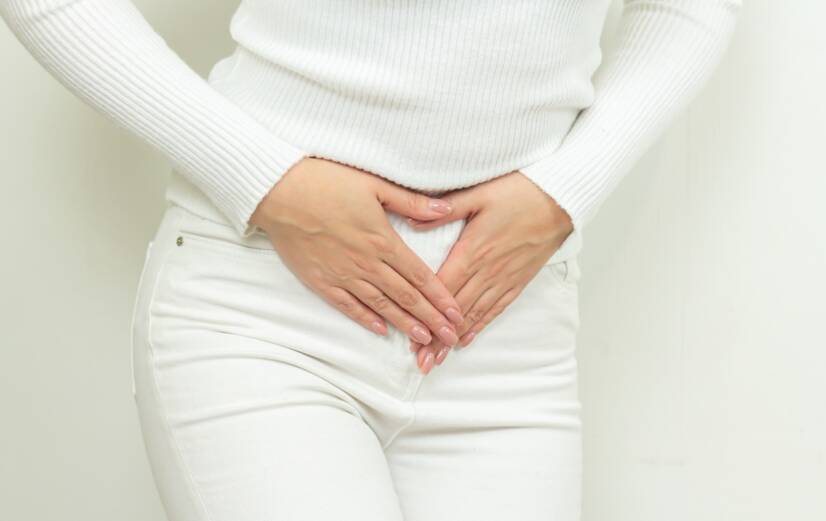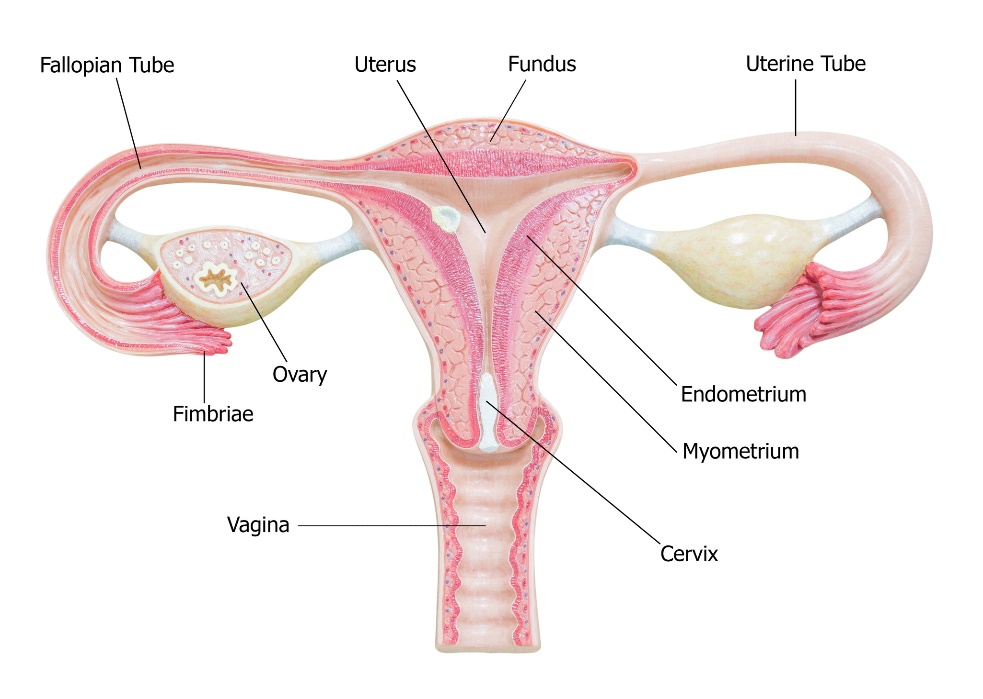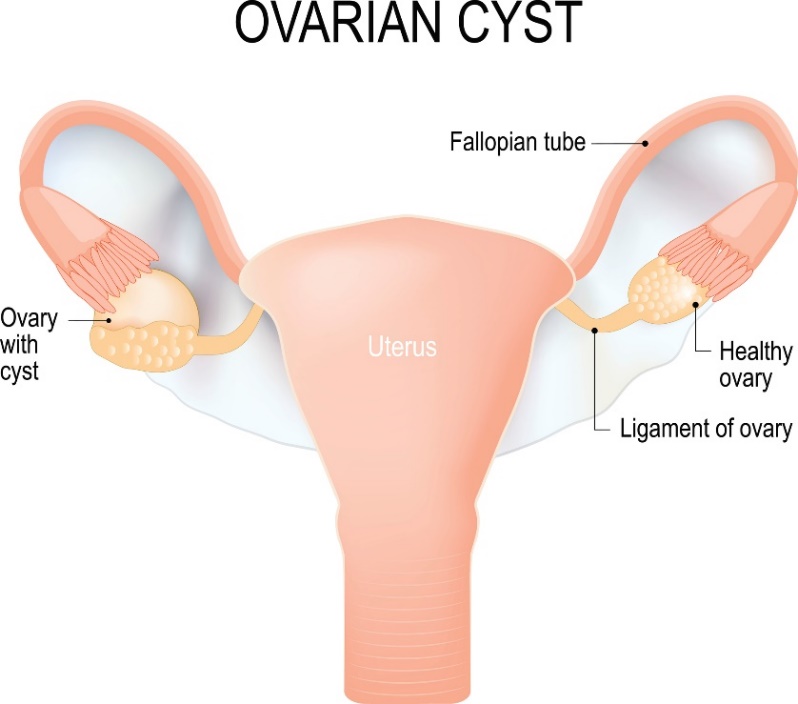- ROZTOČIL, Aleš and Pavel BARTOŠ. Modern Gynaecology. Prague: Grada, 2011. ISBN 978-80-247-2832-2
- healthline.com - 7 Potential Causes of Ovarian Pain: How They're Diagnosed and Treated. Healthline. Jill Seladi-Schulman, Ph.D.
- internimedicina.cz - Endometriosis: a significant impact on a woman's quality of life. Solen. MUDr. Hana Hrušková
- solen.cz - Polycystic ovary syndrome Solen. Jana Vrbíková, M.D.
- ocrahope.org - 5 Possible Causes for Ovarian Pain
- webmd.com - Ovarian Pain: Possible Causes, Diagnosis, and Treatments
- healthline.com - 7 Potential Causes of Ovarian Pain: How They're Diagnosed and Treated
Ovarian pain: what causes it? Pregnancy, ovulation and others

Lower abdominal pain localized around the ovaries can have different causes and etiologies of occurrence. How to distinguish the symptoms and when is it advisable to see a doctor?
It is not just a symptom of an ovarian cold. Does it occur because of pregnancy or during ovulation?
The ovaries are an important organ of the female reproductive system, because in them the maturation of the sex cell - the egg takes place.
Pain localized in and around the ovaries is a symptom that can indicate a change in the menstrual cycle, but also a more serious health problem.
You can find out all the possible causes and interesting information by continuing the article.
Ovaries in a nutshell
The ovaries, called ovaria in Latin, are a paired organ (gland) located in the abdominal cavity of a woman. In terms of fertility, it is the most important organ of a woman's reproductive system.
In the ovaries, the formation and maturation of eggs takes place.
Its important function is also the production of female hormones - estrogen and progesterone.
Just like other organs of the reproductive system, the ovaries can also be affected by a certain health problem. Pain is an alarm and a check of the body for a potential health problem.
However, in the case of the ovaries, an uncomfortable sensation can also signal a change in the menstrual cycle and thus may not immediately indicate pathology.

Causes and etiology of ovarian pain
In addition to the aetiology itself, the different causes are distinguished by the type of pain and accompanying symptoms, such as pathological vaginal discharge, painful intercourse, off-cycle bleeding or urological and digestive problems.
In most cases, ovarian pain is experienced as pain and discomfort in the lower abdomen, especially in the peripheral part of the lower abdomen (on one side or both sides).
Since the ovaries are an important organ for a woman in terms of fertility, home diagnosis is not appropriate in the case of non-specific pain. On the contrary, seeking professional help and diagnosis by a gynaecologist is strongly recommended.
If a woman experiences non-specific and acute pain in the lower abdomen, it is advisable to seek professional help from a gynaecologist without delay.
The following are the most common possible causes of pain in the ovarian region.
Ovulation and fertile days
During ovulation and the fertile window, it is possible to experience mild pain around the middle of a woman's menstrual cycle. This cyclical pain is also known as mittelschmerz pain, which translates as midline pain.
In a regular cycle, ovulation usually occurs in the middle, so the pain can be felt most around the 14th day of a 28-day cycle. During this period, the ovaries are more sensitive, which can manifest itself as soreness in the lower abdomen.
It is possible to feel mild pain on one or both sides of the lower abdomen. One side may usually be slightly more intense. Some women have light bleeding (spotting) during ovulation and in most cases a fertile discharge (cervical mucus).
However, the pain should go away completely after a few hours or days. Otherwise, the pain may indicate another problem and it is advisable to seek specialist gynaecological diagnosis.
Cyst on the ovary
A cyst is a closed benign formation - a sac filled with fluid (blood, water, semi-solid). A cyst can vary in size from a few millimetres to several centimetres.
Symptoms of an ovarian cyst may include lower abdominal pain around the ovaries, pelvic pain and lower spine pain. Pain or discomfort may also occur during sexual intercourse.
Light vaginal bleeding outside the cycle or irregular menstruation is also possible. When a cyst ruptures, one may feel sharp pain and a hard abdominal wall to the touch. In this case, it is advisable to visit a gynecologist in time.
In many cases, cysts tend to disappear spontaneously and do not cause the woman subjectively any significant discomfort.
Functional cysts may represent normal cystically enlarged unruptured follicles in the ovary. These changes may arise due to hormonal changes on the ovary during a woman's menstrual cycle.
Caution - there are a number of different types of cysts based on the etiology of their formation. Some specific types of cysts and growing cysts can also cause serious health problems for a woman.
Professional diagnosis by a physician is necessary.

Polycystic ovary PCOS
Polycystic ovary syndrome is an endocrinological-gynaecological disease in which there is an excessive production of male hormone in a woman's body. The consequence is numerous small cysts localized on the ovaries.
Low levels of female hormones slow down the cyclical process of ovulation and, conversely, high levels of male hormones disrupt the menstrual cycle itself. The lack of ovulation subsequently causes the formation of more cysts on the ovary.
The disease is mainly manifested by menstrual cycle disorders such as anovulation, oligoovulation, irregular and heavy menstruation. Polycystic ovary syndrome can affect a woman's fertility due to the weakening of ovulation.
Excessive hair growth, acne, hair loss or weight gain may also be a sign. Pain in the ovary, abdomen and pelvis may also be a possible symptom.
Polycystic ovary syndrome is diagnosed by a doctor and individual specialist treatment is prescribed. In most cases, this involves pharmacological hormone treatment.
Endometriosis
Another possible cause of pain around the ovaries is a disease called endometriosis. This is a gynaecological disease in which small parts of the uterine lining (endometrium) are located outside the uterus.
The pieces of mucous membrane can be located in different ways - in the peritoneum, ovaries, uterine wall and any place in the reproductive system and abdominal cavity of a woman.
Symptoms of endometriosis are painful overly heavy menstruation, painful intercourse, increased fatigue, indigestion and nausea.
As a result of endometriosis, cysts or uterine fibroids may form in a woman's body, which may result in pain itself.
Endometriosis is diagnosed by a gynaecologist and then specialist treatment is prescribed - medical, hormonal or surgical.
Endometriosis needs to be treated professionally because it can cause associated health problems and problems with a woman's fertility. Home diagnosis and treatment is therefore not appropriate.
Inflammation of the ovaries
An inflammatory process localized in the ovary can be caused by an infection (most often bacterial). Infection can be caused by improper hygiene, unprotected sexual intercourse, sexually transmitted disease, poor menstrual hygiene, weakened immunity and others.
Typical possible symptoms of ovarian inflammation include pain in the lower abdomen, pain during intercourse and urination and, last but not least, pathological vaginal discharge.
The inflammatory process of the ovaries needs to be treated by a gynaecologist in a timely manner. If left untreated for a long time, inflammation can cause serious health problems, the spread of the inflammatory process and subsequent fertility difficulties and even infertility.
The gynaecologist diagnoses the cause of inflammation and also determines the exact method of treatment - anti-inflammatory drugs, antibiotics, analgesics and others.
Cancer of the ovaries
One of the most serious diseases of the ovaries is ovarian cancer - a malignant tumor of the ovary. The early stages of ovarian cancer often may not have any significant symptoms.
Ovarian cancer can cause pain in the ovaries and nearby areas (lower abdomen, pelvis, lower spine). Associated symptoms include increased fatigue, weight loss, digestive difficulties, urogynaecological problems and bloating or swelling of the abdominal area.
Early diagnosis is the key to successful treatment of cancer.
It is therefore advisable to visit your gynaecologist at any negative clinical signs and pain.
Primary prevention in the sense of regular preventive examinations by a gynaecologist is recommended.
Pregnancy
A possible cause of discomfort in the lower abdomen and around the ovaries is pregnancy itself or a woman's ectopic pregnancy.
The symptoms of pregnancy are often similar to premenstrual symptoms (except for the absence of menstrual bleeding).
The first symptoms of pregnancy are morning sickness, increased tightness in the breasts and a change in mood. There may also be a slight dull pain in the lower abdomen due to the egg nesting in the uterus after fertilization.
For any acute, prolonged severe or non-specific pain, a specialist should be seen.
Ovarian torsion (prolapse)
Ovarian torsion is an acute condition where the blood supply to the ovaries is pinched. The ovaries are subsequently not adequately supplied with oxygen and necessary nutrients.
The torsion manifests as acute pain in the affected area in the lower abdomen, nausea and vomiting.
It can occur without a risk factor, but often the change in position is preceded by incorrect (excessive) physical activity. A preexisting pathological ovary (cyst, tumour) also has a higher risk of developing the disease.
It is necessary to seek acute professional help and then perform a laparoscopic procedure to release the affected ovary.
Summary of examples...
Summary of possible causes of pain around the ovaries:
- Ovulation and fertile days
- Menstruation
- Pregnancy
- Ovarian cyst
- Ovarian cyst
- Polycystic ovary syndrome
- Endometriosis
- Inflammation of the pelvic area
- Ovarian cancer
- Ovarian torsion
- Urological problems
- Gastrointestinal problems
Prevention of women's health
Prevention of the female reproductive system primarily consists of regular gynecological examinations and not neglecting the body's warning signals (pain, pathological vaginal discharge, changes in the cycle, bleeding...).
In order to prevent the development of infection and inflammatory process of the female organs, it is advisable to observe intimate hygiene, menstrual hygiene, protected sexual intercourse, non-discreet lifestyle, appropriate choice of clothing in cold weather and many others.
What are the risks of changing sexual partners? Sexually transmitted diseases
Adequate intake of necessary vitamins and minerals - vitamins B, C, D, E, calcium, magnesium and iron - is advisable.
Home help in supporting the health of the female system is the use of natural help of female herbs - common yarrow, yarrow, white horehound, drumstick, raspberry bramble and others. Consumption is possible in the form of herbal teas, extracts or tinctures.
However, their use in certain gynaecological-endocrine diagnoses should be consulted with a doctor.
When is it advisable to see a doctor?
In general, it is advisable for a woman to follow two basic principles.
- Completing preventive gynecological examinations annually to prevent genital and breast health.
- Seeing a gynaecologist in time for any pathological symptoms, pain or uncertainty about health.
Diseases with symptom "Ovarian pain"
Interesting resources










